As described in a recent post, dental conditions are often hidden and painful. The following posts are going to help describe conditions that pets can get as well as treatment. Many people I talk with are surprised how we can help pets with dental conditions and save teeth whenever possible.

As stated in the image above, when conditions are right, we can keep the tooth living even when the pulp (blood and nerves) is exposed in contrast to a standard broken tooth and root canal therapy that results in a non infected, non-vital, functional tooth.
This therapy may look and sound simple, but it is very technique sensitive, uses sterile instruments, and special biocompatible materials.
Case selection is most important to have equal success as standard root canal therapy. This ‘mini root canal therapy’ or vital pulp therapy (VPT) is limited for cases in which the pulp has been exposed for a short time. As time passes the likelihood of infection progressing deeper than the procedure removed pulp along with the body’s ability to respond in a positive manner results in less than ideal outcomes. If a patient was kicked in a cow pasture to fracture the tooth, the general time limits of less than 48 hrs for a dog over 18 months or less than 7 days for a dog younger than 18 months does not apply. In essence, it is important to know the age of the tooth and when/how the tooth break occurred.
In this dog, a hard object struck the tooth during play:
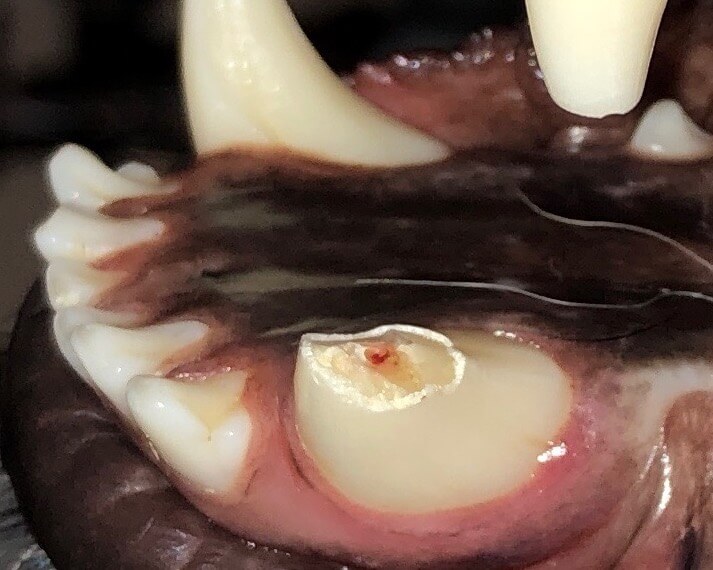
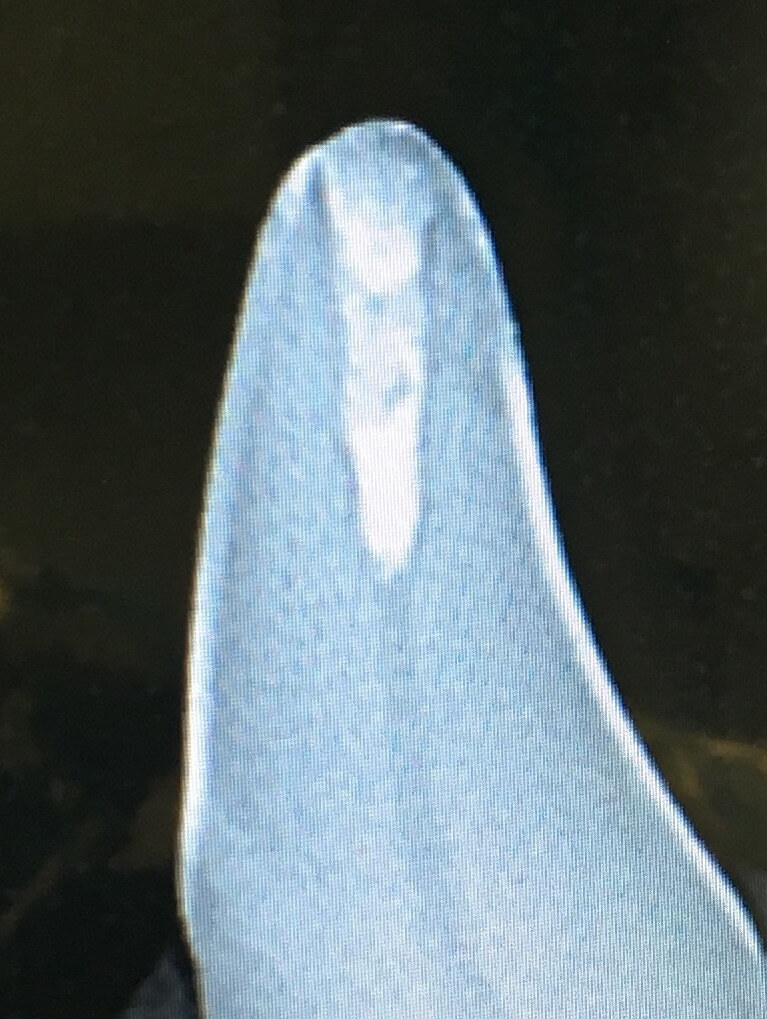
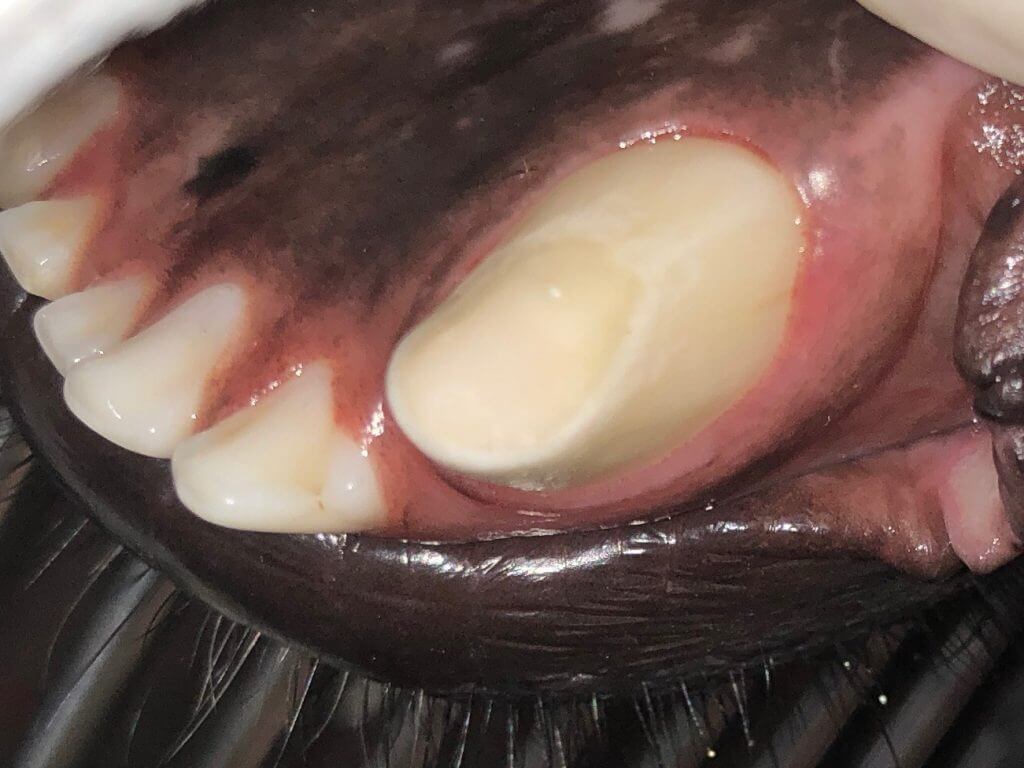
In this cat, a fall luckily resulting in this tooth as the only trauma:
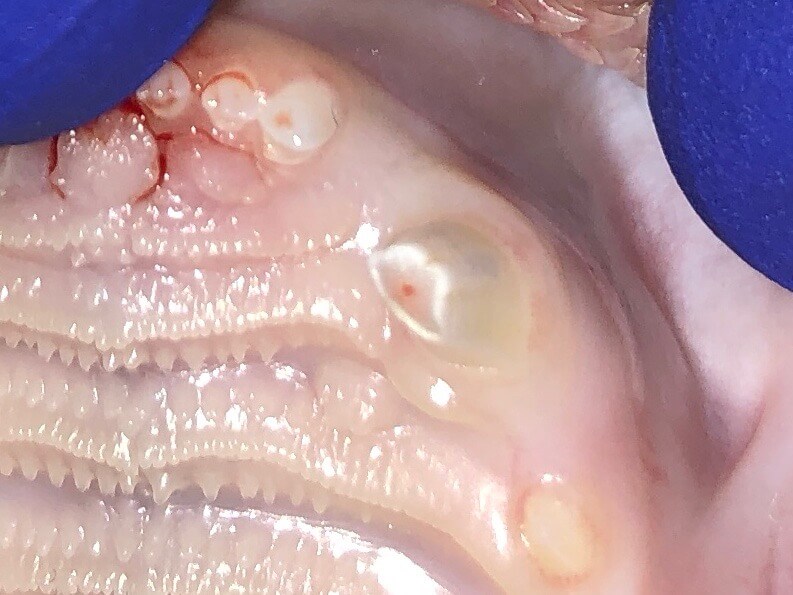

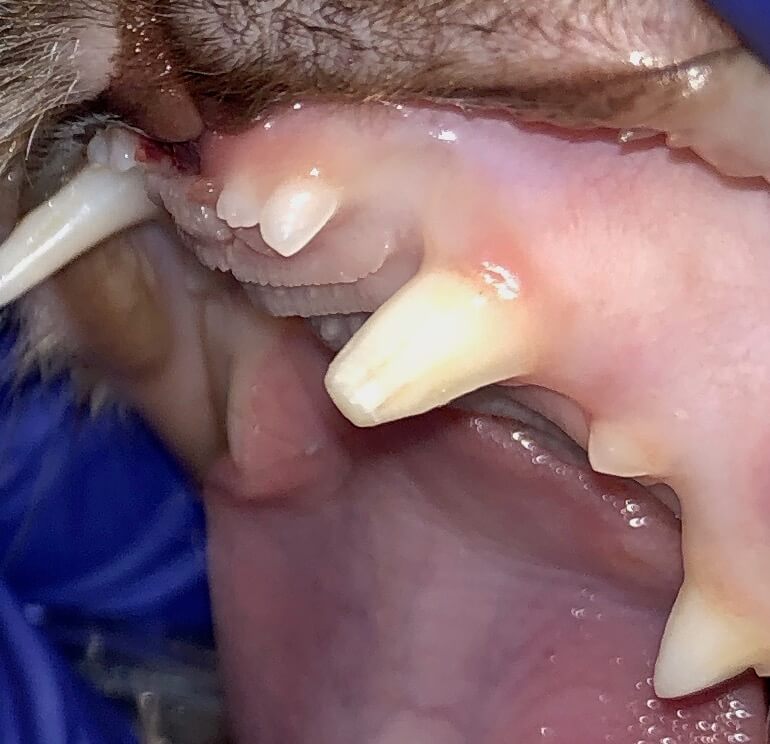
Some times a tooth needs to be shortened due to a tooth contacting soft structures in the mouth usually for alignment reasons. Thus an intentional crown shortening can be the reason for this ‘mini’ root canal therapy. Vital pulp therapy is a shorter procedure than standard root canal procedures so it can be less expensive. In all types of endodontics, it is necessary to follow up with anesthetic imaging of the tooth in 6 months, then every 12 months there after.
Don’t despair if your pet’s broken tooth doesn’t fit the case selection for this procedure: as long as gingiva is healthy, a fractured tooth can be saved by one of the types of root canal therapy: standard, non standard, or recent fracture (VPT).
In this emergency case, call our office or an emergency clinic telling them of the urgency of this case, the time at which the injury occurred, and the age of the pet. They will call my cell phone so I can meet you at an appropriate time, potentially after hours.
